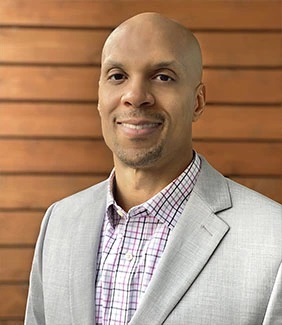The Definitive Guide to Brand Archetypes
Brand archetypes are a great way to breathe emotion into any brand. Humans, by nature, are emotionally connected to people, not companies. Organizations typically select an archetype to add personality to their brand. This allows people to connect with that brand and buy products and services motivated by that connection.
The feelings and connections that motivate people’s actions are one of the true powers of brand archetypes. Now, let’s start with some of the basics.
What are brand archetypes?
A brand archetype is a character that makes a brand more relatable to its target audience. This character makes the audience feel a certain way about that particular brand. Archetypes in branding also make the brand more relatable to its audience. The audience believes in the brand, therefore buying their products and services. You may have never noticed, but we see archetypes in branding all the time. Why? Branding needs to convey a feeling to truly succeed, and successful brands use their archetype relentlessly. But how did brand archetypes originate?
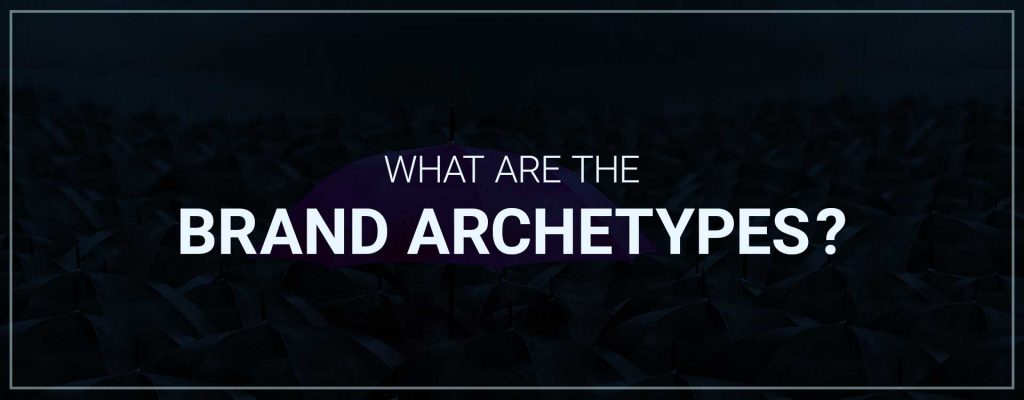
Who created brand archetypes?
Carl Jung developed the modern, psychology-based concept of archetypes. Jung was a psychiatrist from Switzerland who developed key concepts that expanded the field of psychology. He noticed recurring themes and patterns that had arisen during his studies. Thus, he merged psychology and mythology to create a new concept of archetypes.
Since the beginning of time, he believed humans have always used symbolism to understand other people’s ideas. With time, his ideas of archetypes changed. However, he described archetypes as “Forms or images of a collective nature which occur practically all over the earth as constituents of myths and at the same time as individual products of unconscious origin.”
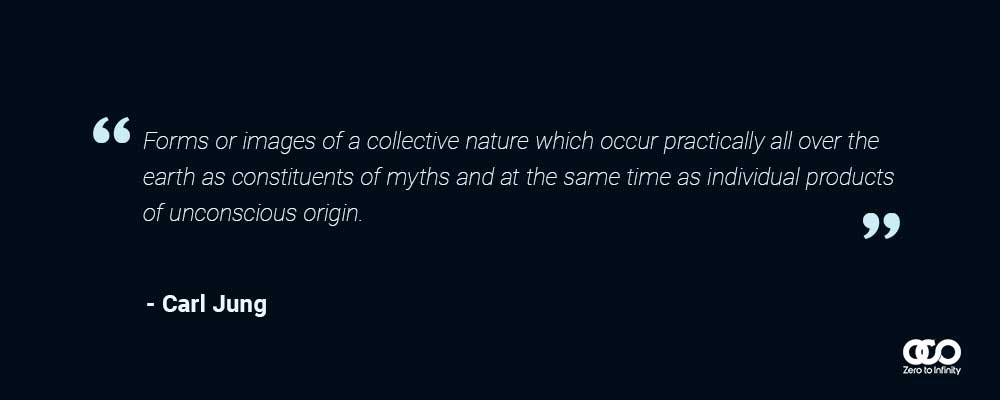
Later, Margaret Mark and Carol S. Pearson popularized the concept of brand personality archetypes with their interpretation of Jung’s ideas in the book The Hero and the Outlaw: Building Extraordinary Brands Through the Power of Archetypes. Mark and Pearson consider brand archetypes similar to “superstars in the film and entertainment industry.” They eventually identified 12 archetypes, each with a powerful identity.
Today, brands use these identities heavily in advertising and marketing. It’s a great framework that helps develop a brand’s characteristics, values, attitudes, and behaviors. By carefully selecting an archetype, brands bridge the gap between consumers and product sales.
What are the 12 brand archetypes?
Let’s briefly take a look at each archetype:
1. Ruler:
Rulers are all about control. They work to obtain and maintain power. The key driver that motivates behavior is the need for security. An example of a ruler is Microsoft.
2. Creator:
A creator’s principal purpose is to create something that has a lot of value. Their worst fears are a creative block when they can’t make anything new. An example of a creator is YouTube.
3. Sage:
When you think of the sage, you think of truth, intelligence, and knowledge. This archetype makes people think. An example of a sage is Oprah.
4. Innocent:
An innocent archetype is all about feeling good and happy. The innocent strives to make others happy with positivity and optimism. An example of the innocent is McDonald’s.
5. Explorer:
The explorer does not like confinement. They need the freedom to explore the world. Explorer brands like to make people feel like they’re free. An example of an explorer is Jeep.
6. Rebel:
Rebels are outlaws, and they love to break the rules. This archetype is usually very different from the rest. They typically do very well because they think differently from everyone else. An example of a rebel is Harley Davidson.
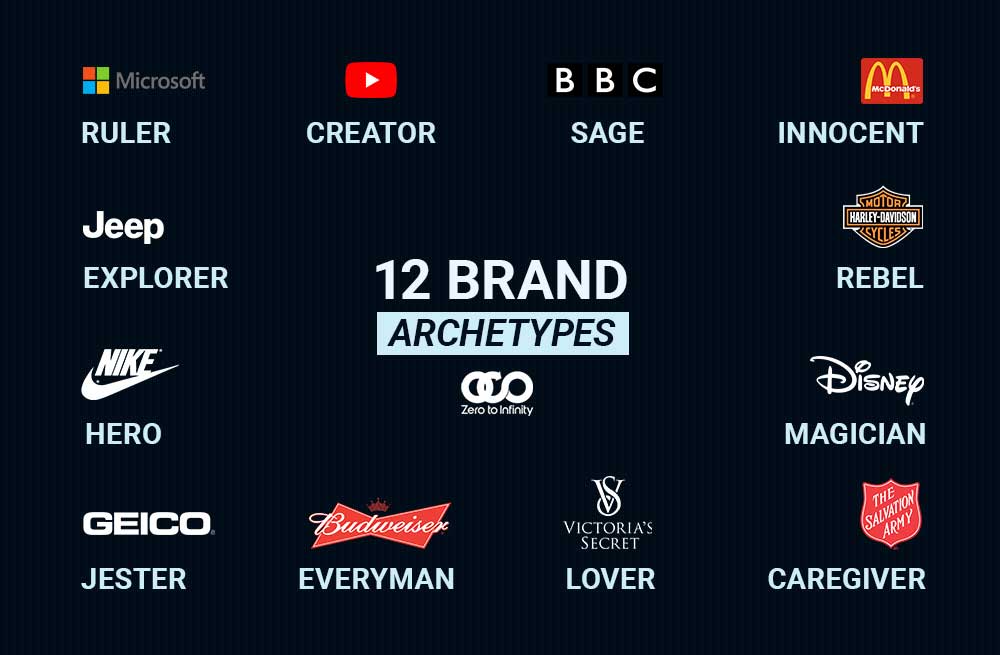
7. Hero:
Heroes display courage. When this archetype appears in branding, they are usually solving a big problem for the customers. An example of a hero is Nike.
8. Magician:
Magicians make dreams come true. When this archetype appears in branding, they go into people’s minds and make it come true in their real lives. An example of a magician is Disney.
9. Jester:
A jester is usually the funny one. This is the class clown who always makes you laugh. When used in branding, you typically see a funny commercial that advertises its service or product. An example of a jester is Geico.
10. Everyman:
An everyman is like a regular person. They want to belong with others and to the world. When used in branding, people feel like they belong to the brand (via service or product). An example of an everyman is Budweiser.
11. Lover:
A lover is about intimacy and sensual pleasure. When using this archetype in branding, it’s usually through beauty and feelings. An example of a lover is Victoria’s Secret.
12. Caregiver:
Caregivers want to nurture and protect you. When used in branding, it’s usually a service that addresses people’s needs with stellar customer service. An example of a caregiver is the Salvation Army.
Typically, organizations would use a brand archetype wheel when deciding on their archetype. The wheel helps make a decision as to which archetype best connects with a targeted audience. However, sometimes the wheel may not give enough information. In that case, you may have to take a brand archetype test that can help clarify the correct archetype.
What are Jung’s four major archetypes?
Carl Jung established four major archetypes that derive from the collective unconscious. Readers should not confuse these archetypes with brand archetypes. However, they can give us insight into how the originators created brand archetypes. His four major archetypes are:
1. Shadow:
This archetype is the animal side of our minds that is there for our survival. A lot of our creativity stems from the Shadow. We usually hide our shadows behind our masks. To many, maybe most of us, our Shadow is the part of us we consider flawed, the part we don’t want anyone to see.
2. Anima or Animus:
This is the male/female psyche that we all have. The anima, a female perspective (feminine), is usually in the man’s unconscious mind. The animus, a male perspective (masculine), is in the woman’s unconscious mind.
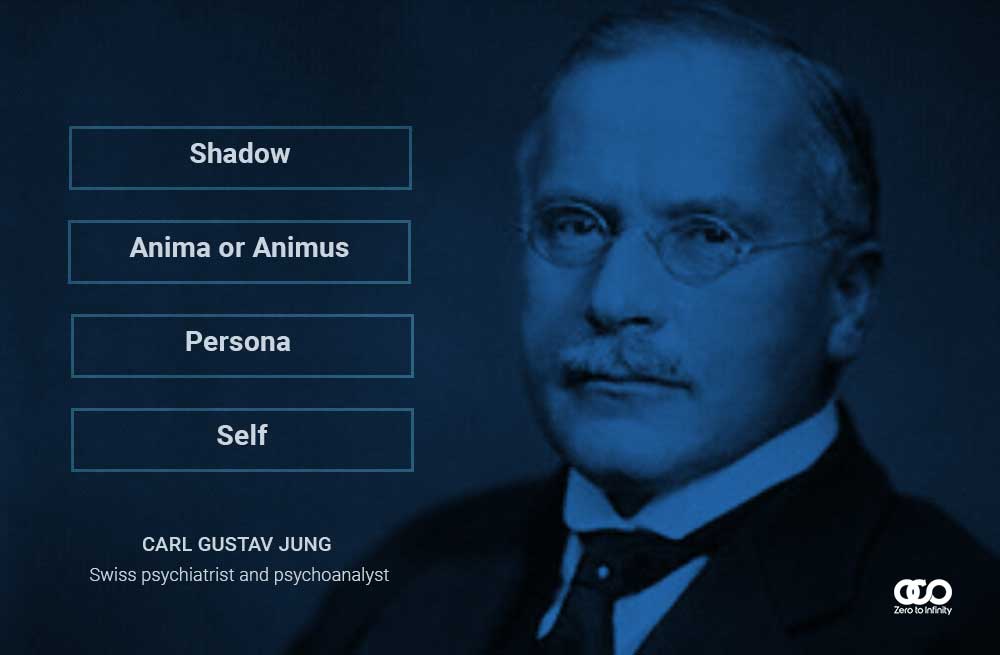
Carl Jung’s four major archetypes
3. Persona:
This archetype is how we present ourselves to the world. Consider this synonymous with the mask that we wear. You could wear one or many. How you act at work will be different from how you behave at home or even in social situations. We usually try to hide our flaws and be the person that people (and ourselves) think we are.
4. Self:
This archetype is who we want to be as a person and our goals in life. Consider this similar to self-actualization.
How to use brand archetypes?
Now that you know what they are, let’s talk about how to use them. You need to understand your brand’s objectives, who you are trying to target, and how your future customers will feel about your brand. These elements will form the foundation you need before deciding on a branding archetype. The most important thing is to be authentic and consistent with your brand while using symbolism that aligns with your brand.
When exploring symbolism to use for your brand, you need to look for ways to reinforce meaning with pictures or symbols. When using an image or symbol for your brand, make sure that they’re easy to understand and customers can relate to them.

After you’ve done your internal brand development, you need to decide on an archetype. After determining your brand’s alignment, you’ll need to sit down and determine what archetype is suitable for your company. The archetype you use will be vital in building the relationship you are looking to develop with your future customers.
Applying archetypes to personal brands
When deciding on your personal brand, you need to pick an archetype that closely aligns with your values. The biggest mistake that people make when selecting an archetype is selecting the one they think their audience wants. Unfortunately, it will be hard to pretend to be something you are not. And soon enough, your audience will sense that you’re not authentic. So, do yourself a favor and select a brand archetype that resonates with your core beliefs and values. Sometimes people have a little difficulty determining their values. So, let’s look at values.
What are your values?
Values are the most important consideration when picking an archetype. You have to ask yourself questions about where you find value in your life. These are a few questions that can help you get started.
- Do you enjoy making other people laugh?
- Do you find yourself enjoying people coming to you for your wisdom?
- Can you comfortably relate one-on-one with a broad range of people?
- Do you want to stand up for those who have no voice?
- Do you always want to go in a different direction than everyone else?
- Are you especially sensitive to beauty and sensuality?
These questions should get you started to understand how to evaluate your values.
How do you want others to perceive your brand?
The way you present yourself as a brand is how the customers are going to perceive you. Therefore, you must be intentional about shaping your brand. When you know how you want others to perceive your brand, it’ll make picking an archetype much easier. You will probably know from the start which archetype you want to select.
The Takeaway About Brand Archetypes
A long time ago, marketing your brand meant putting your product out and hoping it sells. Companies didn’t do much research on what the audience wanted. But with technology and social media, brands now have personalities, aka archetypes. Brands use these archetypes to connect their targeted audience with their brand, products, and services.
Are you ready to find your brand archetype? It’s one of your most powerful tools – it can really jumpstart your business! You can take a brand archetype quiz which will allow you to do branding with an archetypes assessment. Or you may find that working with a brand archetype creator is a more effective way to get started.



